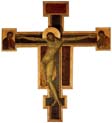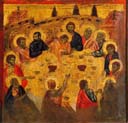Giovanni Cimabue
c. 1240-c. 1302 Italy/Medieval
Click an Image to Enlarge
christ mocked

crucifix

flagellation

madonna enthroned
with angels

madonna with child

maesta

saint francis

the last supper

virgin and child
enthroned

frescoes in the
upper church

example of frescoes
